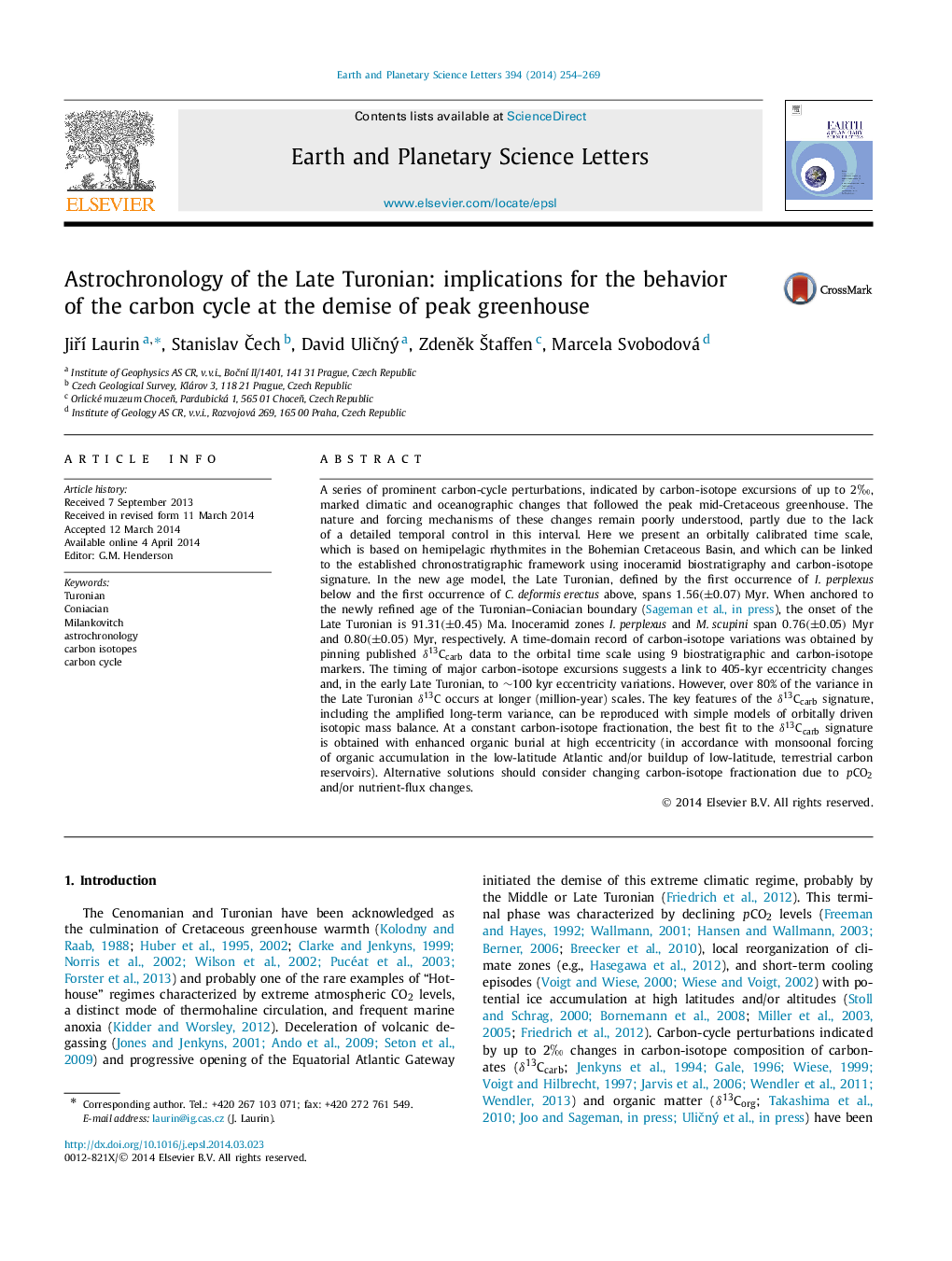| Article ID | Journal | Published Year | Pages | File Type |
|---|---|---|---|---|
| 6429421 | Earth and Planetary Science Letters | 2014 | 16 Pages |
â¢An orbital age model is presented for the Late Turonian and earliest Coniacian.â¢Duration of the Late Turonian is newly constrained to 1.56(±0.07)Myr.â¢Time-domain recalculation of published δ13C data reveals an eccentricity signature.â¢Structure of δ13C records suggests forcing via monsoon-controlled organic burial.
A series of prominent carbon-cycle perturbations, indicated by carbon-isotope excursions of up to 2â°, marked climatic and oceanographic changes that followed the peak mid-Cretaceous greenhouse. The nature and forcing mechanisms of these changes remain poorly understood, partly due to the lack of a detailed temporal control in this interval. Here we present an orbitally calibrated time scale, which is based on hemipelagic rhythmites in the Bohemian Cretaceous Basin, and which can be linked to the established chronostratigraphic framework using inoceramid biostratigraphy and carbon-isotope signature. In the new age model, the Late Turonian, defined by the first occurrence of I. perplexus below and the first occurrence of C. deformis erectus above, spans 1.56(±0.07) Myr. When anchored to the newly refined age of the Turonian-Coniacian boundary (Sageman et al., in press), the onset of the Late Turonian is 91.31(±0.45)Ma. Inoceramid zones I. perplexus and M. scupini span 0.76(±0.05)Myr and 0.80(±0.05)Myr, respectively. A time-domain record of carbon-isotope variations was obtained by pinning published δ13Ccarb data to the orbital time scale using 9 biostratigraphic and carbon-isotope markers. The timing of major carbon-isotope excursions suggests a link to 405-kyr eccentricity changes and, in the early Late Turonian, to â¼100 kyr eccentricity variations. However, over 80% of the variance in the Late Turonian δ13C occurs at longer (million-year) scales. The key features of the δ13Ccarb signature, including the amplified long-term variance, can be reproduced with simple models of orbitally driven isotopic mass balance. At a constant carbon-isotope fractionation, the best fit to the δ13Ccarb signature is obtained with enhanced organic burial at high eccentricity (in accordance with monsoonal forcing of organic accumulation in the low-latitude Atlantic and/or buildup of low-latitude, terrestrial carbon reservoirs). Alternative solutions should consider changing carbon-isotope fractionation due to pCO2 and/or nutrient-flux changes.
